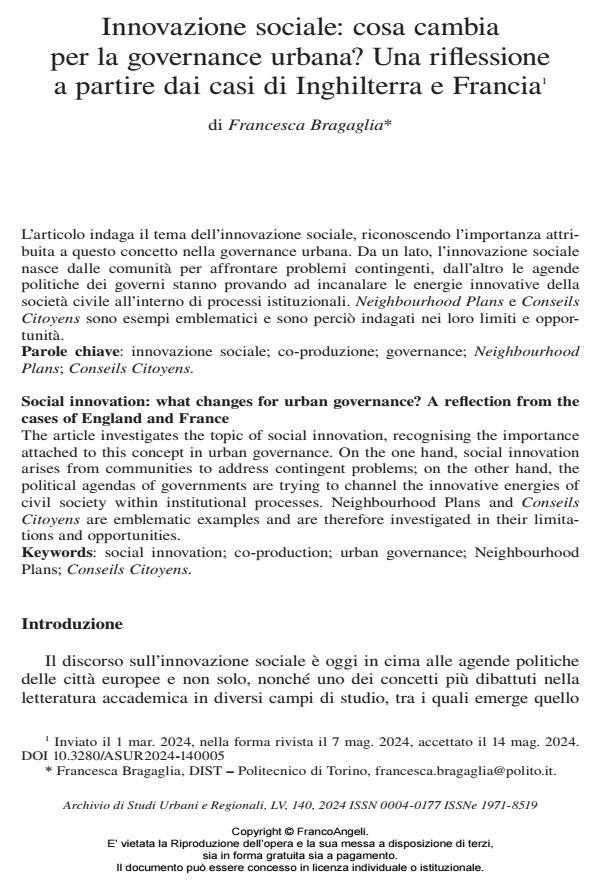Social innovation: what changes for urban governance? A reflection from the cases of England and France
Journal title ARCHIVIO DI STUDI URBANI E REGIONALI
Author/s Francesca Bragaglia
Publishing Year 2024 Issue 2024/140
Language Italian Pages 22 P. 102-123 File size 384 KB
DOI 10.3280/ASUR2024-140005
DOI is like a bar code for intellectual property: to have more infomation
click here
Below, you can see the article first page
If you want to buy this article in PDF format, you can do it, following the instructions to buy download credits

FrancoAngeli is member of Publishers International Linking Association, Inc (PILA), a not-for-profit association which run the CrossRef service enabling links to and from online scholarly content.
The article investigates the topic of social innovation, recognising the importance attached to this concept in urban governance. On the one hand, social innovation arises from communities to address contingent problems; on the other hand, the political agendas of governments are trying to channel the innovative energies of civil society within institutional processes. Neighbourhood Plans and Conseils Citoyens are emblematic examples and are therefore investigated in their limitations and opportunities.
Keywords: social innovation; co-production; urban governance; Neighbourhood Plans; Conseils Citoyens.
Francesca Bragaglia, Innovazione sociale: cosa cambia per la governance urbana? Una riflessione a partire dai casi di Inghilterra e Francia1 in "ARCHIVIO DI STUDI URBANI E REGIONALI" 140/2024, pp 102-123, DOI: 10.3280/ASUR2024-140005